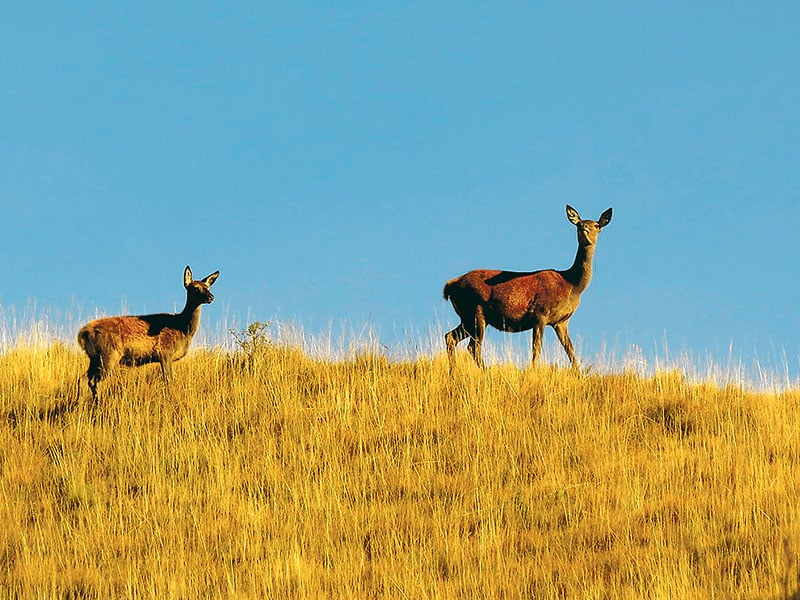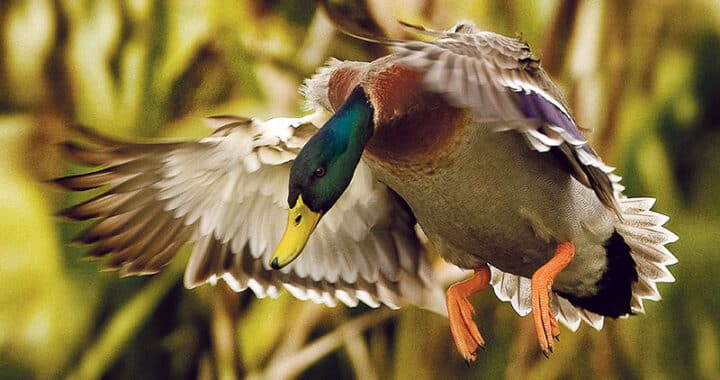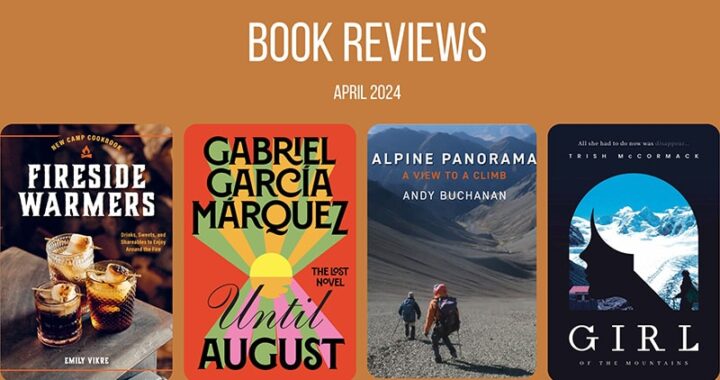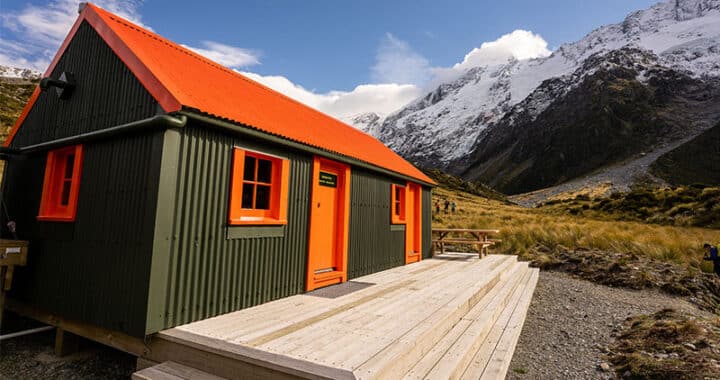Delectable dining on venison
3 min read
Hind and yearling. If you want venison, take the yearling. Don’t shoot the hind. Photo: Ben Hop
Venison is one of the healthiest, low-fat, organic meats available. Obviously, the best animal for prime venison is a yearling, with the next two or three months ideal to get one for the deep freeze.
The hinds, when they give birth to a fawn in late November to early December, kick out last year’s fawn, now a yearling. Young yearlings are not as yet fully versed in terms of alertness and without their accompanying mother’s awareness alongside, can often be found in the open a couple of hours after dawn or before nightfall.
Venison is versatile meat, which can be used in many different recipes, but remember that because of its low-fat content, it is vital not to overcook it. Unlike most meats, venison muscle tissue is not layered with fat and so is naturally low in cholesterol. Any fat you see on the beast when preparing the carcass or before cooking should be trimmed off.
A yearling’s venison is so tender that it’s best to cook it in a pan or a casserole. But if you have an older deer, such as a stag, think about taking it to your local butcher and getting a hind leg made into corned venison, which is just like extra-delicious corned beef.
I sometimes get the butcher to make me corned venison, venison sausages, or salami.
One of the best venison cookbooks I’ve come across is Andy Lyver’s Wild and Wonderful Everyday Venison Recipes for All Seasons, which was published in 2007. There are numerous recipes for barbecue and steak, roasts, meat loaves, burgers, pizzas, pies, tarts, soups, stir-fries, and casseroles.
With reference to casseroles, Andy’s Boozy Venison casserole is a beaut. It is simple and delectable. About one kilogramme of venison is chopped into bite-sized chunks and shaken in a plastic bag with flour. In a hot, cast-iron pan, briefly brown the chunks in some butter or oil. Then pop the browned venison into a casserole dish. Dissolve some liquid honey in 600ml dark beer and pour it over the venison. Cook in an oven of 180 degrees Celsius for two hours. We add onions – just pan-fried lightly before browning the venison.
Andy’s book features casserole variations, too: slow-cooked venison in sherried prunes – another scrumptious one – leek and venison casserole, or spicy paprika.
If you can’t get a copy, Google is your best bet. I chanced upon an excellent venison stew by noted chef Jamie Oliver. You could get your butcher to mince venison, particularly of an older deer. That opens the way up to making patties for summer barbecues or meatballs.
For that, you’ll need 500gm venison mince, two slices wholemeal bread, one onion, 1/2 tsp thyme, one tbsp chopped parsley, one or two cloves crushed garlic, pepper and salt to taste, and 1tbsp olive oil. Use a food processor to crumb the bread, add all other ingredients listed above, and finish with the venison and drizzle in the olive oil. It will form into a lump. Remove and shape into evenly sized balls using tablespoons. Bon Appetit!
A quick reminder
Don’t shoot a hind this time of the year. She’s either pregnant or has given birth to a little fawn. So, either you needlessly kill two deer in shooting a pregnant hind or if you shoot the mother, a little fawn hidden away dies a slow, lingering death. So, I repeat, don’t shoot a hind.



